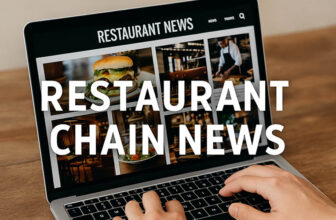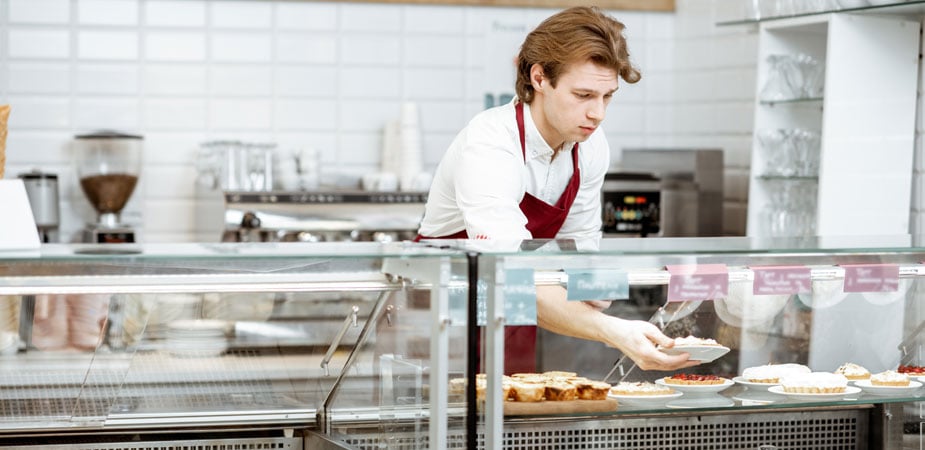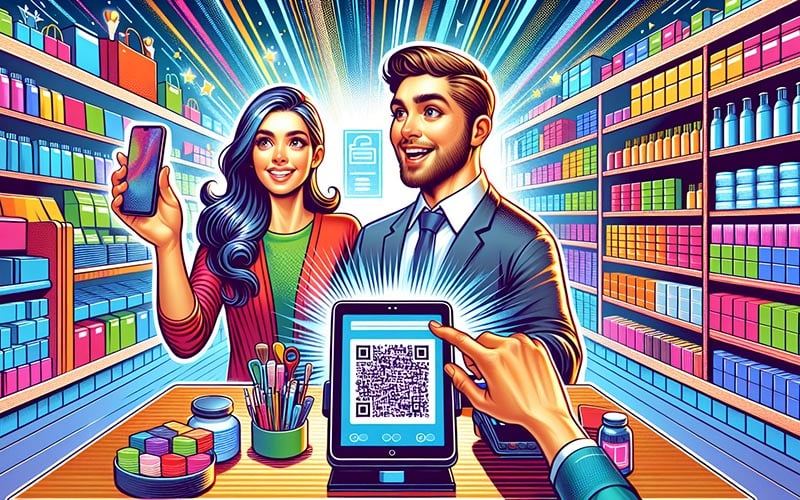
Want to enhance your business with POS QR Code technology? Learn the benefits, setup process, and best practices in this guide.
Quick Summary
- QR codes improve customer experience in retail and restaurants with touchless payments, streamlined ordering, and interactive promotions.
- Setting up a POS QR code system involves choosing the right software, creating custom codes, and placing them in the right spots to get maximum customer engagement.
- Managing privacy, cost, and accessibility is key to the successful integration of QR codes in business operations.
- Compare POS Systems to find the one with built-in QR software.
What is a POS QR Code System
Quick Response codes, also known as QR codes, are two-dimensional barcodes that stores information for quick retrieval. Originally created to track items in the manufacturing industry, these codes have become popular in retail and hospitality as a digital doorway to connect customers directly to the payment process, promotions, and other services.
QR code adoption has been more pronounced during the COVID-19 pandemic where it allows touchless transactions at a safe distance. Businesses often print QR code displays to make it easy for customers to access.
In today’s commerce and dining, QR codes are key to secure and fast customer interactions. With 52% of retailers and 47% of restaurants using QR codes to process payments or enable mobile ordering (Square, 2025), it’s clear this technology is widely adopted.
Customers love scanning a QR code which takes them to product info or checkout pages and allows them to access promotions – all part of their overall experience when visiting stores or restaurants.
Why Use QR Codes in Your Point of Sale
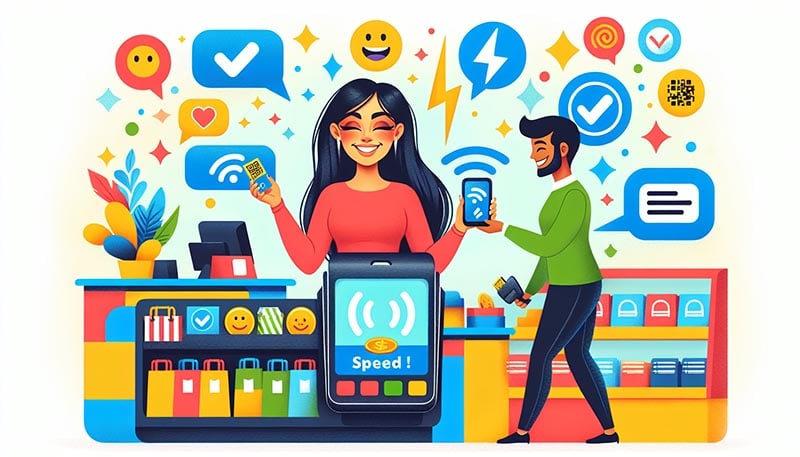
Using QR codes in your POS can speed up transactions and improve operational efficiency. Customers can pay faster, reduce queues and increase satisfaction.
It’s easy to implement and requires minimal additional hardware and no extra effort. You’ll save on labor costs while improving customer experience.
By connecting print to digital with QR codes, customer engagement gets a big boost. This increased connectivity means easier access to product info and promotions, which can lead to higher interaction rates and sales volumes.
Using QR codes in your point-of-sale system not only improves service speed, but also saves cost and increases customer interaction.
How to Install a POS QR Code
To install a POS system with a QR code, you need to follow these steps: choose the right POS software for your business, create custom QR codes that match your brand, and embed those custom codes in your store.
Each step in this process is essential to get it right and get the most out of QR code technology.
1. Choosing the Right POS Software
Choosing the right POS system is key to using QR code technology. Modern POS systems can generate different types of QR codes to streamline operations such as payment, customer loyalty, and overall customer experience.
Many systems have a “Scan to Order” feature that allows for seamless customer transactions. However, not all software solutions have full QR code integration. To stay ahead of the curve and manage your costs, it’s worth considering software designed to manage QR codes.
This way, your business is future-proof.
2. Create Custom QR Codes
Online generator tools make it easy for creating custom QR codes by allowing you to choose themes, layouts and logos that match your brand’s visual identity. Customizing those codes with graphics or company logos increases customer recognition and engagement.
Make sure to test the QR codes before printing them so they lead to the right place and don’t frustrate customers. Using an app to generate QR codes allows you to make changes without changing the actual code itself, so it’s more flexible.
2. Embed QR Codes in Your Store
Placing QR codes strategically around your store will increase their impact. By putting them on tables or in promotional areas, you’re allowing customers to access product info or promotions easily.
When used right, QR codes will guide the customer through an informative journey around your store and offer them valuable incentives to improve their overall shopping experience.
For businesses with multiple locations QR codes are a powerful tool to help customers get familiar with the store layout before they even step in. Embedding them in marketing campaigns will increase customer engagement and operational efficiency.
QR Codes for Better Customer Experience
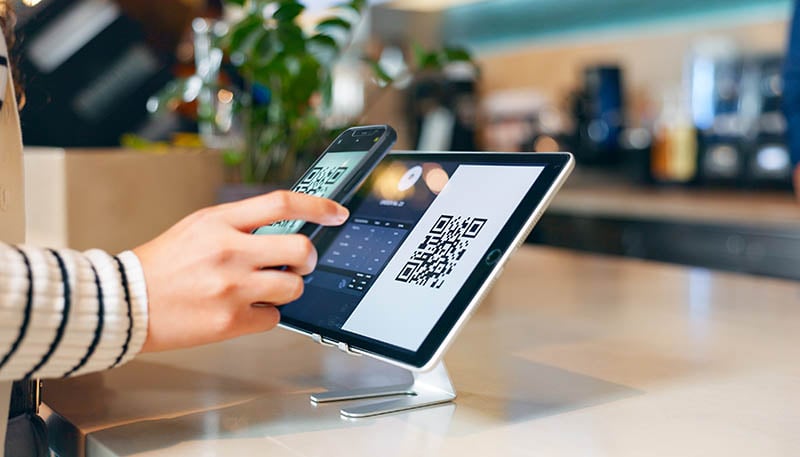
By providing touchless payments, interactive promotions and simplifying the ordering process QR codes improve the customer experience. This not only increases convenience but also customer engagement and satisfaction.
Touchless Payments
In this day and age where health is top priority, contactless payment is more important than ever. By using QR code for transactions customer safety is increased as it reduces physical interaction with any of the POS terminals and hence reduces germ exposure.
Customers can use their smartphones to scan the QR code and pay through credit card, Apple Pay or Google Pay. These transactions are encrypted, so it’s more secure than the traditional credit card process.
Using POS software that supports QR code technology makes contactless payments seamless. This not only speeds up transaction time but also caters to customer’s preference by providing a platform for customers who want to pay touchless. This way businesses can accept payments fast and secure without extra cost.
Promotions
Using QR codes for promotional activities will increase customer engagement with your business. By putting QR codes on flyers or business cards, you’re providing a bridge between physical material and online platforms like your website, social media profiles, or contact details.
This will not only drive customer participation through specific marketing campaigns, but also improve overall experience and potentially increase sales.
Embedding QR codes in your marketing will give consumers a quick way to get important info and increase engagement and brand loyalty. Linking QR codes to special offers and exclusive promotions will be a magnet to attract new customers and get existing ones to come back more often.
Simplified Ordering Process
Restaurants are using QR codes for ordering, so customers can use their smartphones for touchless and QR ordering. This will speed up the service, especially during peak hours, and provide a better dining experience.
By presenting menu items through QR codes, customers will have a better interaction with the menu and services offered by the restaurant.
Common POS QR Code Issues
Managing issues like privacy concerns, cost control, and accessibility barriers is key to making QR code systems work for customer satisfaction and benefits.
Privacy
When using QR code systems you must prioritize data privacy. Using encrypted QR codes for payments is more secure than traditional payment methods. But customers may scan malicious QR codes that will direct them to phishing sites and compromise their payment info.
You must follow data protection regulations like GDPR and CCPA when managing these code systems. Be transparent on how customer data is collected and get user permission is key to compliance and user privacy when it comes to QR code payments.
Cost Control
Implementing a QR code system in your POS requires an upfront investment for software licenses, QR code creation and hardware. You must understand these costs so you can budget accordingly.
Do regular check-ups on how often QR codes are used to reduce unnecessary costs and increase ROI. To reduce out-of-pocket expenses, look for volume discounts when buying services or equipment for QR codes.
Additional costs for system updates, data storage, and customer support must also be factored into the ongoing budget.
Using low-cost or free marketing and promoting staff training will increase efficiency and reduce long-term costs. By controlling costs, businesses can enjoy the benefits of QR code technology without breaking the bank.
Accessibility Barriers
Not all customers have smartphones. While tablets and smartphones can scan QR codes, laptops can’t. Businesses can increase customer interaction by using QR codes effectively.
Businesses can take different approaches, such as distributing cards with QR codes or using NFC (Near-Field Communication), to cater to all customers and improve the overall experience.
QR Code Best Practices for Retail and Restaurants

Using QR codes in retail and restaurants will increase operational efficiency and customer satisfaction. This includes offering payment through QR codes, using QR codes to engage customers, and following data privacy regulations when using them.
Retail
QR codes in retail stores provide customers with extra data when scanned from posters or displays. Store associates can use these QR codes to give customers product details and speed up the payment process using mobile wallets at the point of sale.
Stores must give customers the option to opt out or delete their info after using a QR code, to respect customer privacy and regulations. Monitor costs when creating unique QR codes as part of your rollout financial planning.
Restaurants
QR codes provide a sanitary and contactless way for customers in restaurants to view menus without physical contact. Linking QR codes to table numbers will speed up service as customers can place orders directly from their table. Online menus allow for instant changes to show current offerings and promos.
QR codes should complement, not replace, traditional menu options to cater to all customer types. To make it more usable, QR codes should have a high-contrast design for easy scanning and lead to mobile-friendly pages with fast load times to increase overall customer satisfaction during their dining experience.
Marketing Campaigns
Using QR codes in marketing will increase engagement and sales. By putting QR codes in promotional activities like exclusive content or promos, retailers create an interactive experience for customers. Integrating QR codes with loyalty programs makes it easier for repeat customers to redeem rewards and get promos.
Placing QR codes in traditional print media like flyers and ads will connect potential buyers to the business’s digital services which can lead to increased interaction and sales figures. When these coded elements are tied to time-limited offers they will prompt customers to take action fast – hence increasing the impact of the marketing.
POS QR Code Future Trends
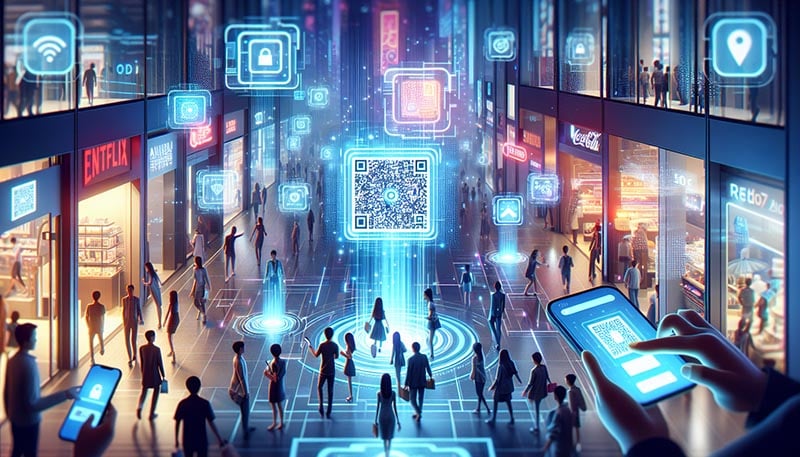
Emerging technologies and the demand for omnichannel experience will be good for QR code in POS. Businesses are using QR codes more as they want to have consistency across different buying platforms – physical stores and digital shopping environment.
Expect more customer engagement and satisfaction with this change. This will mean easier access and a seamless experience across services. As QR code technology gains more capabilities, it will be integrated with POS solutions to increase operational efficiency and customer relationships. It will pave the way for new business models in commerce and the restaurant industry.
Conclusion
Using QR codes in your POS will change the way you do business – faster transactions, lower costs and more customer engagement. By choosing the right software and creating custom QR codes for payments, promos or ordering, you can give a more interactive and seamless experience.
Stay updated with the latest trends and best practices, and you can unlock the full potential of QR technology – from contactless payments to interactive marketing campaigns. This will not only make you stand out from the competition but also give your customers a hassle-free modern experience – whether they’re shopping or dining.
Find the perfect POS system with QR technology built in here
Frequently Asked Questions
What is a QR code?
A QR code is a 2D barcode that stores information; you can access it through smartphones or tablet scanning. This technology enables information sharing and interaction.
How will QR codes benefit my POS system?
Integrating QR codes with your POS will increase transaction speed, reduce labor costs, and increase customer interaction by making the checkout process more efficient.
So, this will be a win-win for both employees and customers.
How to set up a POS QR code system?
To set up a POS QR code system, choose the right POS software, create custom QR codes, and place them strategically around your store.
This will give your customers a seamless transaction experience.
How will QR codes benefit the customer?
QR codes will benefit the customer through touchless payments, interactive promos, and a more streamlined ordering process, making transactions more convenient and fun.
What are the common problems with POS QR codes and how to fix them?
Common problems with POS QR codes are privacy, cost, and accessibility. You can fix these by encrypting them, complying with data privacy laws, and providing an alternative payment option for customers without smartphones.
Source: Square Future of Commerce Report (2025). How to Create and Use QR Codes for Your Business.


